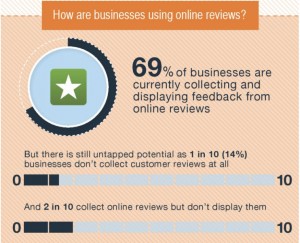 Adding audio to your website can be highly beneficial for many reasons and really serve to broaden and enhance the user experience. From up-to-the-minute podcasts and step-by-step guides to interviews, music or live radio, audio allows your users to become more immersed in your website and creates variety, entertainment and engagement.
Adding audio to your website can be highly beneficial for many reasons and really serve to broaden and enhance the user experience. From up-to-the-minute podcasts and step-by-step guides to interviews, music or live radio, audio allows your users to become more immersed in your website and creates variety, entertainment and engagement.
But not all website audio is good audio and as with any other part of your website, quality needs to come very high up on your agenda if you are to keep your visitors happy and encourage them to return to your site. For audio, this means:
- Good audio content
- Good audio quality
- An intuitive website interface
In this blog post, we look at how to ensure that your audio files are of great quality and worthy of their place on your website.
Good audio content
Audio, as much as your written online content, needs to be planned, scripted and delivered with care and attention to detail.
For the spoken word, this might involve a copywriter or editor and depending on the type of audio file you are creating, might also include a professional voiceover artist or actor on the production team to give it that professional, polished flair. The two most important things to bear in mind are purpose and audience. Keeping sight of these two crucial factors will enable you to consider the following:
At the planning and writing stage
Structure, tone of voice, choice of vocabulary, length of script, male or female voices/characters, characterisation, storyline/plot, tie-in with branding, call to action, length of sentences.
At the production and delivery stage
Pronunciation, accent, tone of voice, speed of delivery, clarity of speech, diction, sound effects, music.
Good audio quality
Although a great audio file starts with content, it can quickly be spoilt by inferior sound production, so it’s essential to use the right equipment and tools for the job. If you are hiring a professional company to create your files, this won’t be a problem, but if you’re going it alone and producing audios yourself at home (and in many cases there’s really no reason why you shouldn’t), you’ll need some basic equipment. The essential two items are:
- The microphone.
When it comes to purchasing microphones, you tend to get what you pay for, and there is a definite difference in sound quality between mics. Luckily, microphones are not terribly expensive and are a great investment that you will use for years to come. For voiceovers and narration, choose a unidirectional microphone (i.e. one that picks up sound coming from one direction) to avoid picking up background noise.
- Sound editing software.
For a free program, you can’t really beat Audacity. It has all the functionality you’re likely to need (assuming you’re producing narratives, voiceovers, podcasts and so on), is quick and easy to learn and won’t cost you a penny. If you want to get more involved with audio editing and have lots of time to spend (it’s addictive…), Adobe Audition is a fantastic piece of software, but comes with a price tag.
Intuitive website interface
Another thing to consider is the way in which your audience will be interacting with your audio files and how your user interface supports them in doing so. Automatically playing music on arrival at your homepage might work for some sites, but it could become irritating for frequent visitors and will likely be even more so if your audio is a narration or spoken introduction. Giving your users the freedom to turn the audio on or off is usually a better idea.
Think carefully about where on the page to place your audio files and how to make them look. It should be obvious to the user that there is audio to hear, so make sure that you use playback controls that not only tie in with your website, but that are clear and practical.
Including a transcript of spoken audio is also very useful, not only for users who prefer to read the written word or who would like to be able to easily search for particular sections, but also for SEO purposes (since search engines cannot currently ‘read’ audio files in the way that they can do with text).
Above all, the message to take home is that for audio to be a valuable part of your website, you need to spend time and effort preparing and presenting it, in the same way as any other part of your online content.
Rather than being a pretty add-on, audio can be a really central part of your website offering and give your visitors a deeper, more connected and more engaged experience. Focusing on quality content, quality sound and quality user interface will allow you to do just that, and ensure that your audio files really earn their keep.
Digital & Social Articles on Business 2 Community(23)
Report Post





